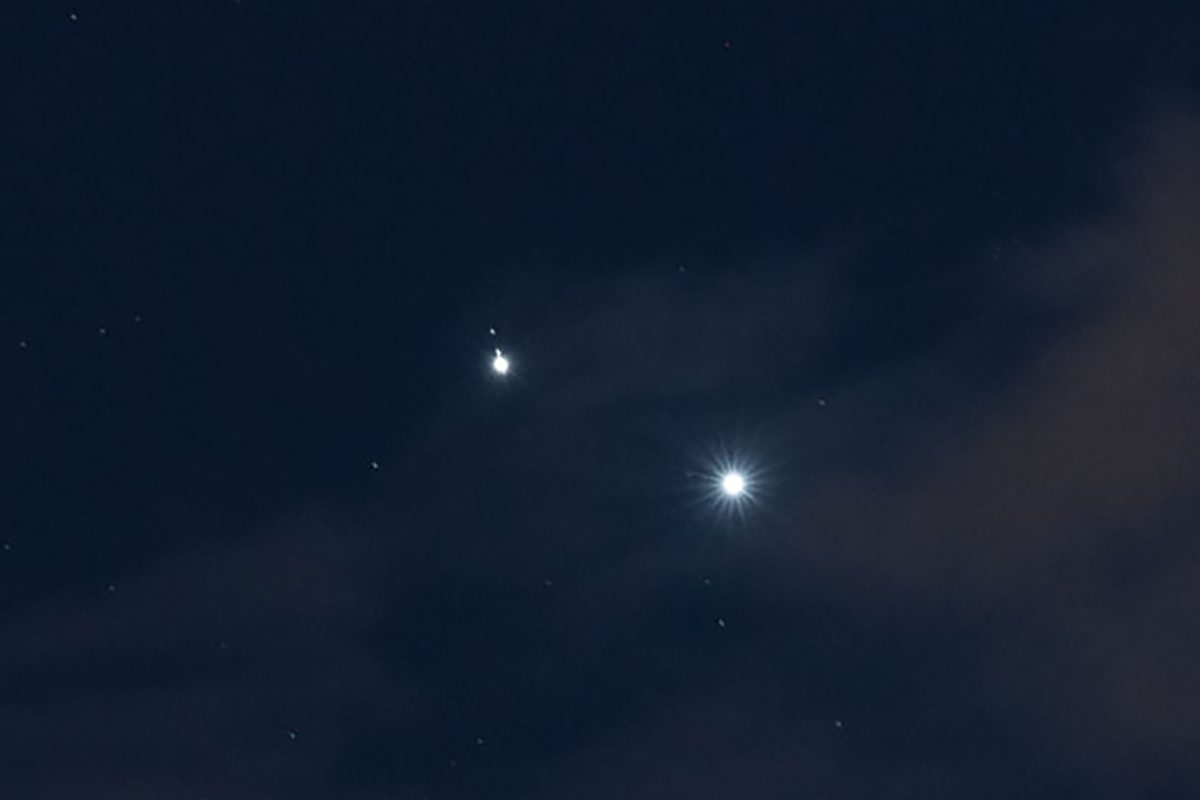Venus is the brightest planet that can be seen from Earth. At its peak brightness, when 22% illuminated, Venus approaches mag. –5 – that’s so bright that it can cast shadows, if conditions allow.
Jupiter is bright too, able to reach mag. –2.94 under optimum conditions (coincidentally, that’s the same maximum brightness as Mars). Mercury isn’t far behind, able to attain a peak magnitude of –2.48.
Find out more about observing the planets in August and the August 2025 planet parade.
Of course, catching all four near one another at peak brightness can’t actually happen, as Jupiter and Mars need to be opposite the Sun, a position that Mercury and Venus can never attain.
That’s not to say that a meeting between some of these worlds isn’t impressive.
And in August 2025, you’ll have a chance to take a look and see for yourself.
Key dates
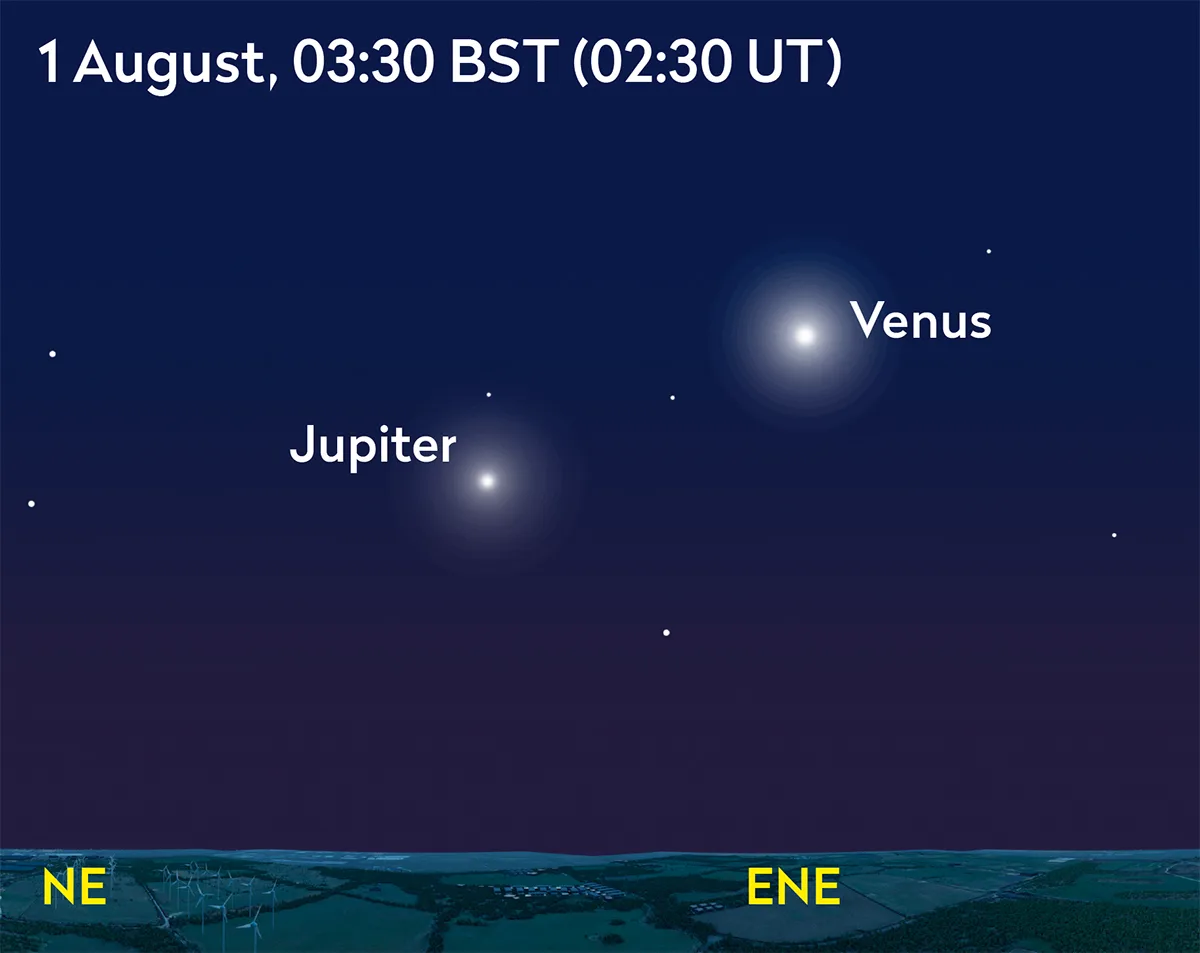
On 1 August, it’s just mag. –3.9 Venus and mag. –1.8 Jupiter that appear together in the dawn twilight.
They appear a little under 11° apart on this date, both being above the horizon just after 03:00 BST (02:00 UT).
But you’ll need to give them a bit more time to get to a decent altitude for viewing, say from around 04:00 BST (03:00 UT).
Over the course of the following mornings, the apparent gap between them closes due to Venus making a dash to the east, running under the stars that form the Gemini twin Castor’s foot.
Catch Venus early enough on 2 August, when the sky is still dark, and you might be able to see it 2.3° south of the open cluster M35. Binoculars will give the best view of this meeting.
On the morning of 7 August, the separation will be just 5°, Venus’s eastward rush far greater than the slow eastward crawl currently exhibited by Jupiter.
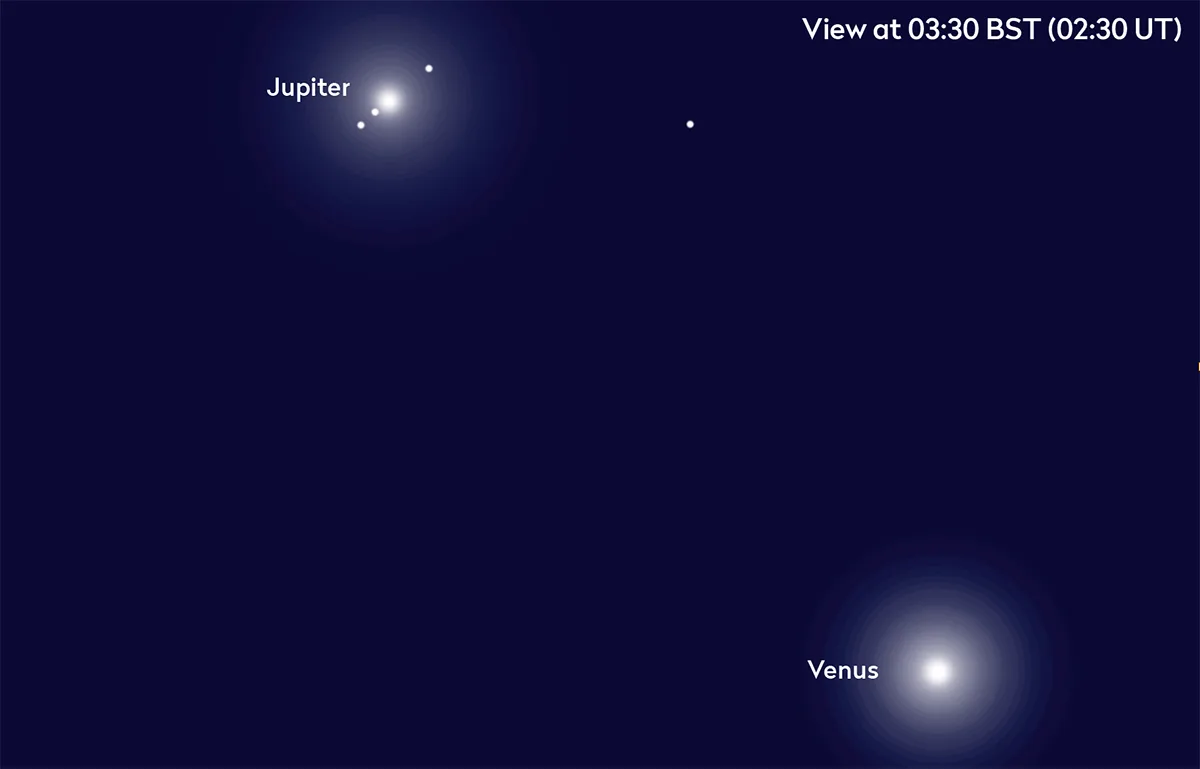
Mercury is around too, but stubbornly refuses to be seen on this date, being too far entrenched in the Sun’s glare.
By 10 August, Jupiter and Venus will appear a little over 2° apart, now a striking pair for those who get up early enough to see them.
The closest approach occurs on the morning of 12 August, the planets being separated by 52 arcminutes.
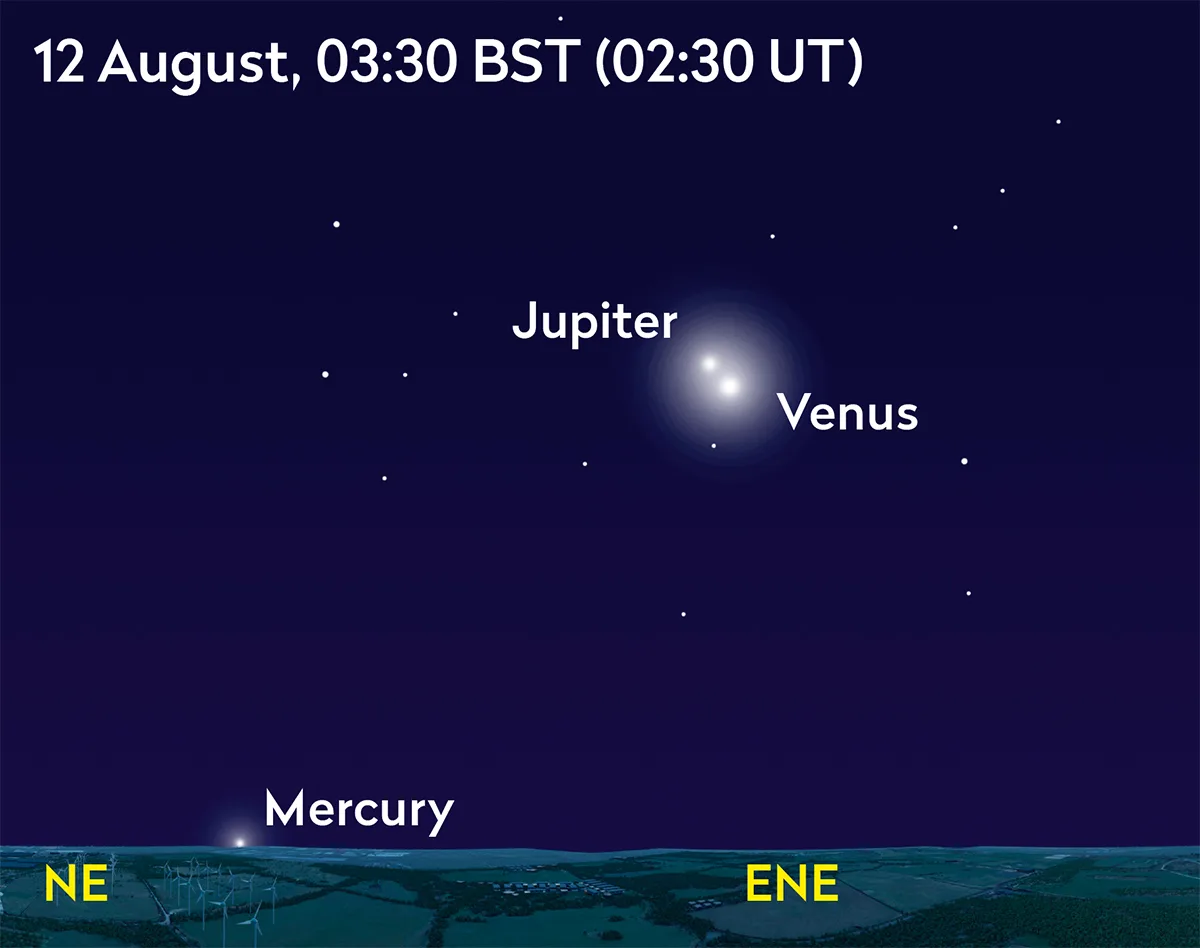
Telescopically, Venus is showing a 13-arcsecond disc, 78%-illuminated.
Jupiter appears 33 arcseconds across.
After 12 August, the pair start to separate once again, but another element is now ready to come into play.
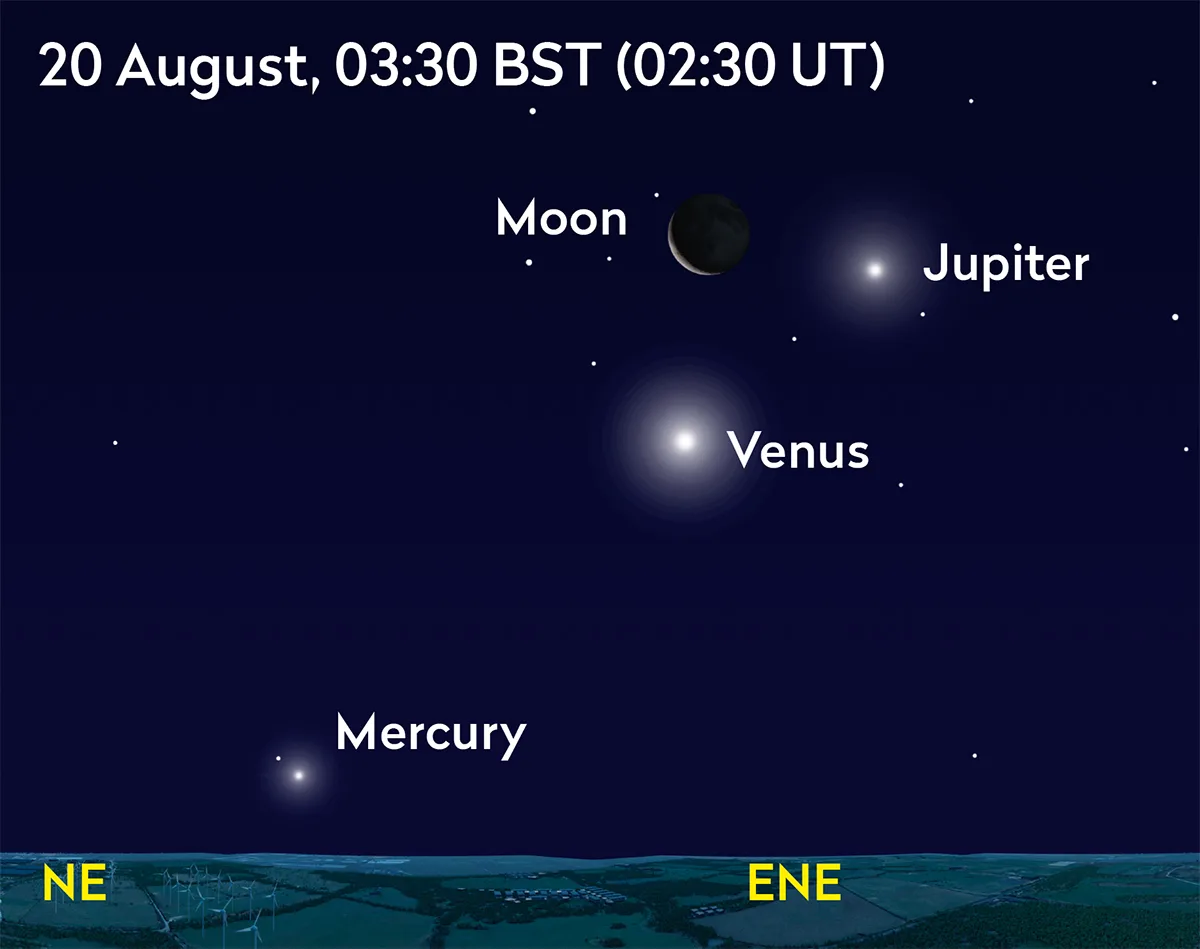
Mercury is now brightening, appearing as a star-like dot in the morning twilight further to the east of the main pair.
Between 19 and 22 August, the waxing crescent Moon skips along the line of planets, augmenting what is sure to be an already dynamic Solar System display.
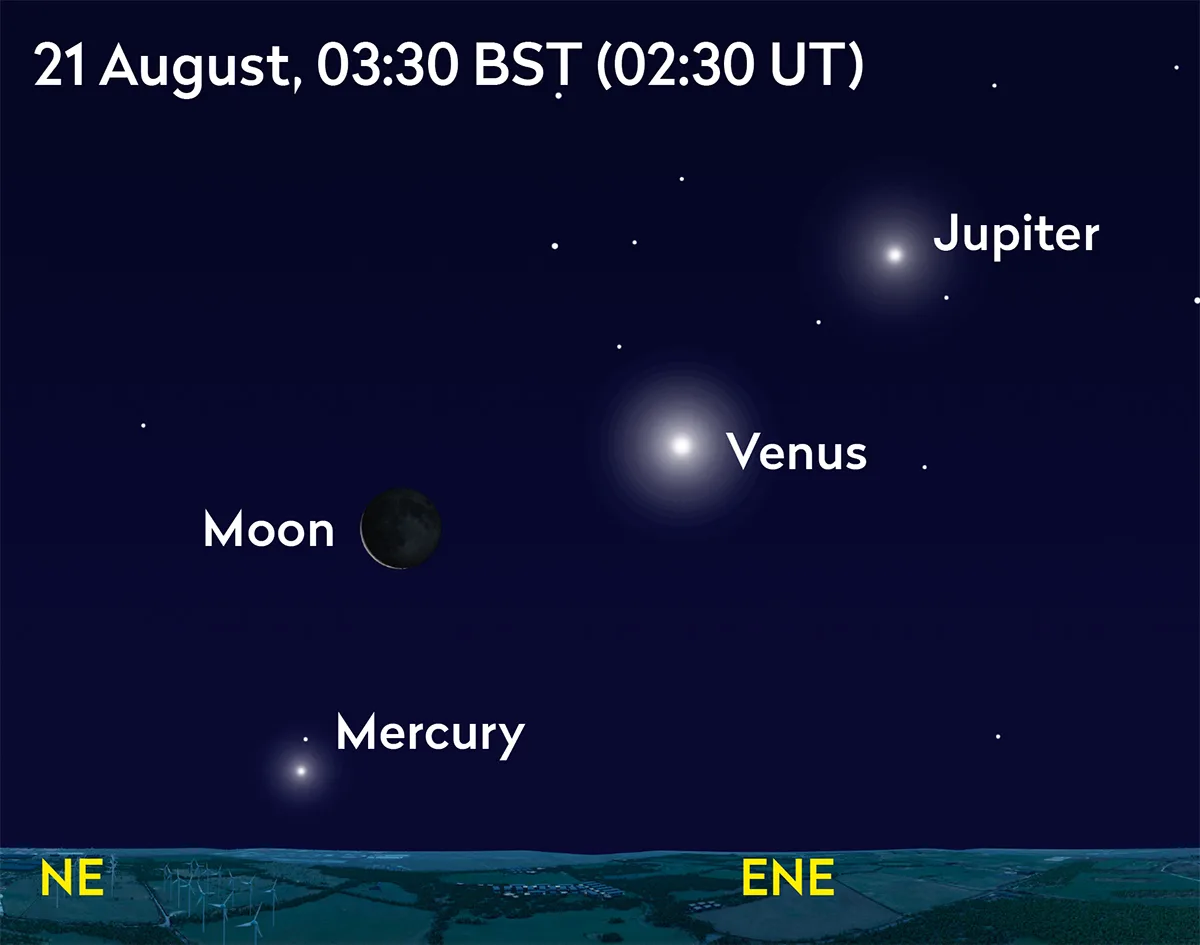
If you observe or photograph Venus and Jupiter in August 2025, we’d love to hear from you! Email us via contactus@skyatnightmagazine.com
